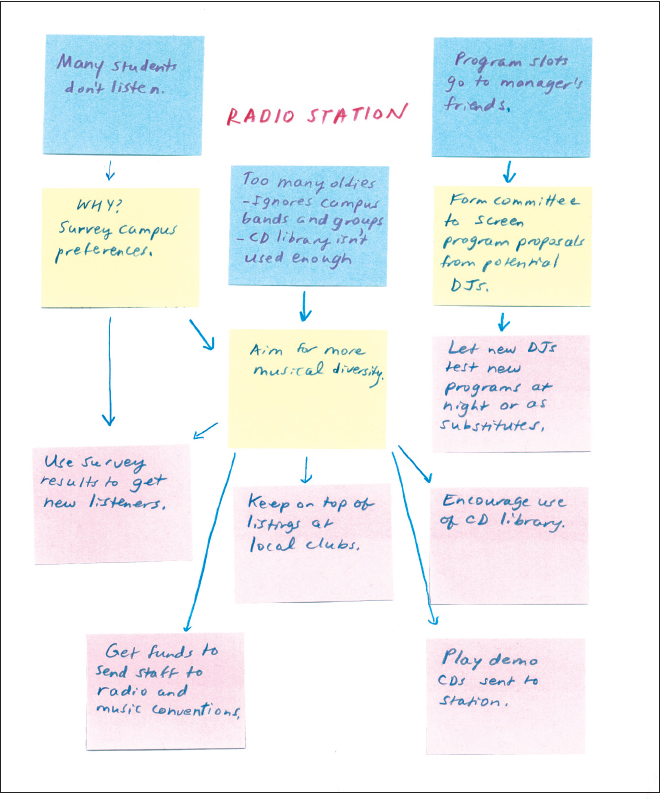Mapping
Mapping taps your visual and spatial creativity as you position ideas on the page, in a file, or with cloud software to show their relationships or relative importance. Ideas might radiate outward from a key term in the center, drop down from a key word at the top, sprout upward from a root idea, branch out from a trunk, flow across page or screen in a chronological or causal sequence, or follow a circular, spiral, or other form.
Andrew Choi used mapping to gather ideas for his proposal for revitalizing the campus radio station (Figure 19.2). He noted ideas on colored sticky notes — blue for problems, yellow for solutions, and pink for implementation details. Then he moved the sticky notes around on a blank page, arranging them as he connected ideas.
Here are some suggestions for mapping:
- Allow space for your map to develop. Open a new file, try posterboard for arranging sticky notes or cards, or use a large page for notes.
- Begin with a topic or key idea. Using your imagination, memory, class notes, or reading, place a key word at the center or top of a page.
- Add related ideas, examples, issues, or questions. Quickly and spontaneously place these points above, below, or beside your key word.
- Refine the connections. As your map evolves, use lines, arrows, or loops to connect ideas; box or circle them to focus attention; add colors to relate points or to distinguish source materials from your own ideas.
After a break, continue mapping to probe one part more deeply, refine the structure, add detail, or build an alternate map from a different viewpoint. Also try mapping to develop graphics that present ideas in visual form.
